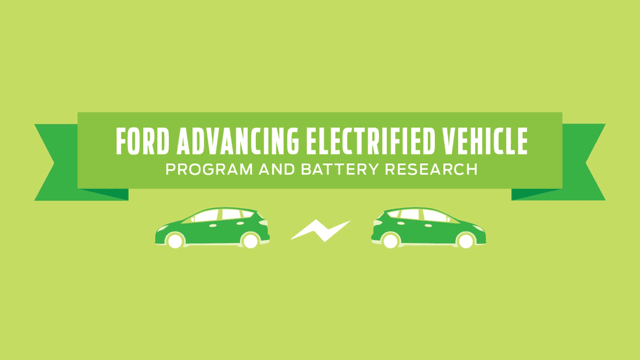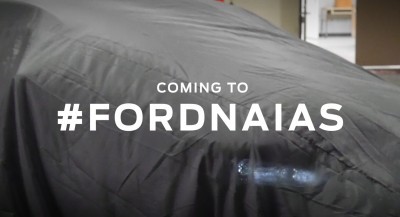
Ford is making a giant hoopla over a very unexciting announcement. One mostly sans cars, by the way, excluding the 2016 Focus Electric and teased ______ Energi PHEV.
The plan lacks a catchy name for now, so let’s just call it e-Ford for short.
Will e-Ford be able to make a big market impact from the 4.5-billion investment over the next half-decade? And is Ford really the one to pursue this? Their tech, as many know all too well, is woeful at times. They kept paying SONY and Microsoft ridiculous licensing and tech-services fees for MyFord Touch long after the user experience was hopelessly yestertech. They have since chosen Blackberry (!), a soon-dead tech entity, to run the next MyFord and SYNC operating systems. Eek. So, it will be terrible from day one. And five years behind iOS and Android.
Only proximity to Dearborn makes Toronto-based Blackberry a “good” choice. Perhaps Ford will just buy the sad, tired tech reject outright for a song in about a year. Then the OS will come free!
But these are all subsystems — not the core vehicle propulsion. Yes. So the angel on your shoulder says, maybe Ford can really be effective as an electric tech leader in actual drivetrains?!
Yes. This is a much better way to use the company’s strengths and legacy. But so far… the results of Ford’s electric model programs have been…
Mired by low sales for all models of Energi PHEV models, and barely-triple-digits for the full-EV model of Focus Electric.
The Fusion Hybrid and Escape Hybrid are two standout achievers — in sales and real-world buyer benefits. They are smooth and light on gas — which is why taxi fleets love them almost as much as a pack of Priiii.
This entire hybrid system, however, is directly purchased from Toyota. The e-CVT, batteries, engine control hardware and software all comes in a box. It attaches to Ford engines, and delivers its zing with a blue oval badge.
So.
Will Ford’s new push into hybrids be successful?
Yes. For sure. Cars like the new Taurus, Lincoln MKC/MKX, Explorer and Edge would all seem like natural fits for some electrification. F-150 models and even the biggest trucks and SUVs, like the Navigator and F-650? They would be even more improved by a 40-percent MPG bump than a regular car.
And that is what Ford is really promising via its ‘customer-centric’ development approach. Until this realignment, skeptics would say no four-ton truck would ever get a hybrid system because there are no fuel economy rules of CAFE averages to benefit from the expense. Even so, buyers would definitely notice.
The Ford plan is deliberately vague. EV cars, hybrid options and full PHEV variants of existing model lines are all plausible, with we’d predict at max two e-Ford options for each nameplate. (Sidenote: There is nothing in any of these materials about any type of fuel-cell EV, running on Hydrogen, by the way). Selective application of the electric tech where it will help that car the most. Escape e-AWD? Sure!
Taurus/Police Interceptor PHEV? Yes.
Diesel-electric F-250 hybrid? Also yes.
But to achieve this lofty aim by 2020, let alone 2025, Ford needs to think as big as it is talking lately. This is a good sign. They also might need to invest triple that amount to avoid a C-MAX Hybrid mileage write-down, or frequent tell-offs by drivers frustrated by SYNC’s ‘special needs.’
Will a legacy industrial giant be the one to lead a future e-mobility charge? Perhaps….. with a lot of hard work and a lot more nimble engineering — for both hardware and soft.
As a buyer in a few years, this might be a big “Buy” signal. But as an investor, this announcement is a definite Sell cue.
Ford Outlines Major EV Push
Dec 10, 2015 | DEARBORN, Mich.
Ford Investing $4.5 Billion in Electrified Vehicle Solutions, Reimagining How to Create Future Vehicle User Experiences
- Ford is investing an additional $4.5 billion in electrified vehicle solutions by 2020, including the new Focus Electric with all-new DC fast-charge capability, which delivers 80 percent charge in an estimated 30 minutes and projected 100-mile range
- The company is adding 13 new electrified vehicles to its product portfolio by 2020; more than 40 percent of Ford’s nameplates globally will be electrified by the decade’s end
- Ford also redefining how future vehicles are created, moving from a features-based product development to a customer-experience-led process, applying insights from social scientists
DEARBORN, Mich., Dec. 10, 2015 – Ford is investing an additional $4.5 billion in electrified vehicle solutions by 2020 as well as changing how the company develops vehicle experiences for customers – all to make people’s lives better by changing the way the world moves.
Ford is adding 13 new electrified vehicles to its portfolio by 2020, when more than 40 percent of the company’s global nameplates will come in electrified versions. This represents Ford’s largest-ever electrified vehicle investment in a five-year period.
On the way next year is a new Focus Electric, which features all-new DC fast-charge capability delivering an 80 percent charge in an estimated 30 minutes and projected 100-mile range – an estimated two hours faster than today’s Focus Electric.
The new Focus Electric, which starts production late next year, also will provide North American and European customers:
- SmartGauge with EcoGuide LCD Instrument Cluster, which offers a multitude of customizable displays that can help the driver see real-time EV power usage to help maximize vehicle efficiency
- Brake Coach, another smart feature that coaches the driver on how to use smooth braking to maximize the energy captured through the Regenerative Braking System. The more energy a driver captures through braking, the more energy is returned to the vehicle’s battery
- Fun-to-drive character, with agile steering and handling engineered into the vehicle to give drivers a more connected feel to the road
Ford’s shift to add electrified vehicle solutions answers increasing global trends calling for cleaner, more efficient vehicles.
Experience-Led Design
Ford also is reimagining how to set itself apart in the marketplace by focusing on the customer experience and not just the vehicle itself. The company is changing its product development process to support the shift.
“The challenge going forward isn’t who provides the most technology in a vehicle but who best organizes that technology in a way that most excites and delights people,” said Raj Nair, executive vice president, Product Development. “By observing consumers, we can better understand which features and strengths users truly use and value and create even better experiences for them going forward.”
In addition to traditional market research, Ford is investing in social science-based research globally, observing how consumers interact with vehicles and gaining new insights into the cognitive, social, cultural, technological and economic nuances that affect product design.
“This new way of working brings together marketing, research, engineering and design in a new way to create meaningful user experiences, rather than individually developing technologies and features that need to be integrated into a final product,” Nair said. “We are using new insights from anthropologists, sociologists, economists, journalists and designers, along with traditional business techniques, to reimagine our product development process, create new experiences and make life better for millions of people.”
Next year, Ford is doubling the number of projects that use ethnographic research versus this year.
The team of social scientists already has spent months exploring topics such as the future of luxury transport, how people form relationships with their cars and the role of trucks in the American heartland.
ReD, a social science-based strategy consultancy, has been innovating with consumer goods and pharmaceutical companies for a decade. ReD started working with Ford – its sole automotive client – in 2012.
During the past three years, the team has invested more than 4,000 hours with thousands of vehicle users in more than 25 cities worldwide, taking 80,000 photos, nearly 3,000 hours of video and more than 8,000 pages of field notes, feeding countless insights to improve the product creation process.
“For 70 years, market research has been done by asking people for their opinion. But
Ford has always been fundamentally skeptical about that. Henry Ford used to say, ‘If I asked people what they wanted, they would have asked for a faster horse,’” said Christian Madsbjerg, founder of ReD Associates and author of The Moment of Clarity. “I chose to work with Ford because this approach is in their DNA and is setting the company at the forefront of this advanced and bold process, which is redefining market research and silo-busting the way the company operates.”
Another new twist to the product development process is that designers no longer just sketch products but also full customer experience illustrations that visualize the experience each product is meant to deliver. The series of vignettes define a unique user journey that seamlessly integrates both hardware and software experiences.
This user experience design technique also plays an important role in developing the Ford Smart Mobility plan, which is designed to take the company to the next level in connectivity, mobility, autonomous vehicles, the customer experience and data and analytics.
“As both an auto and a mobility company, we at Ford are going further than just designing the product to move people from point A to point B,” Nair said. “We are considering the way customers interact with our vehicles as a unified experience, looking for ways to excite and delight customers and make their lives better.”

Tom Burkart is the founder and managing editor of Car-Revs-Daily.com, an innovative and rapidly-expanding automotive news magazine.
He holds a Journalism JBA degree from the University of Wisconsin – Madison. Tom currently resides in Charleston, South Carolina with his two amazing dogs, Drake and Tank.
Mr. Burkart is available for all questions and concerns by email Tom(at)car-revs-daily.com.


















